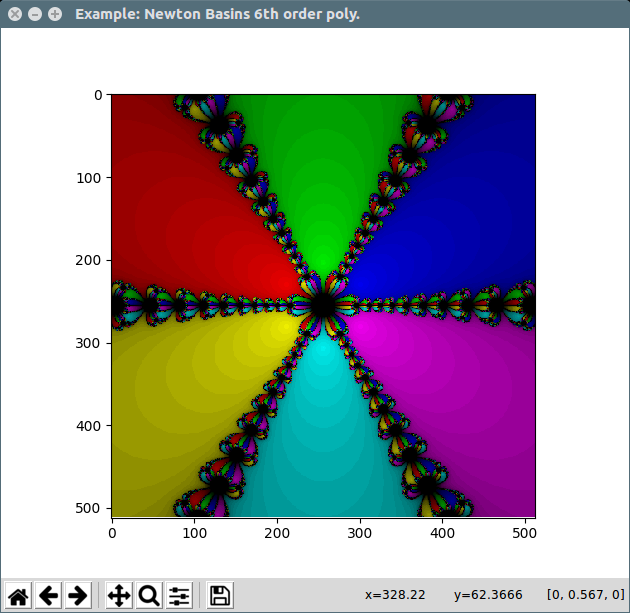Building python wheels for many linux-es
Ever wondered how to build your python project and generate Linux binaries, aka wheels, that can be pulled from PyPI and run on any linux? Keep reading, you will be walked through in this brief post.

@jontoney
Packaging and distributing is certainly one crucial step in the process of creating an app/lib. This is the moment you expose your app to the world, hopefully in a way that people can easily install. However, python is not known for its reputation with packaging, specifically for Linux based platforms where glibc version may differ among distros and building portable binaries can be challenging. Effort to simplify this led to the manylinux project and the PEP513, which will be referred in the following sections. For now let’s start with how the app/lib directory should be structured.
Project directory structure
The project directory should follow a standard structure. None of this is mandatory, but the aim of this post is to show something concrete that works. So this is the dir structure being followed:
proj-name/
├─ proj_name/
│ ├─ __init__.py
│ ├─ proj_name.py
│ ├─ foo.py
│ ├─ bar.py
│ ├─ ...
│ └─ tests/
│ └─ ...
├─ setup.py
└─ .git/
Essentially proj-name/ can be whatever pleases you and potentially matches
the name of the git repo. This is not relevant for the packaging though.
On the other hand proj_name should match name specified in
setup.py::setup(name='proj_name'). This is where all the source code will sit.
It is worth noting that once the package is pushed to PyPI it will be
installable with pip install proj_name.
Setuptools setup.py
To package our app/lib we start by populating the setup.py script that has the
metadata which will be pushed to PyPI along with the actual binaries and also
describes how to build eventual extensions. In this post an example of building
a C++ extension, that uses pybind11, is shown.
The script should call a setup() function which at the bare minimum passes
the arguments name, version and packages. The first two are
self-explanatory, and the latter is a list of module names that should be
packaged. Instead of manually listing the modules, one can use the function
setuptools.findpackages which will conveniently do exactly that.
Follows an example of a setup() function with a few more arguments:
setup(
name='proj_name',
version='0.0.1',
author='author',
author_email='user@domain.com',
description='A short description of the app/lib',
long_description='A longer one',
ext_modules=[CMakeExtension('proj_name')],
cmdclass=dict(build_ext=CMakeBuild),
packages=find_packages(),
classifiers=[
'Development Status :: 3 - Alpha',
'Intended Audience :: Developers',
'License :: OSI Approved :: MIT License',
'Topic :: Scientific/Engineering',
'Programming Language :: Python :: 3',
],
zip_safe=False,
)Packaging
The actual building and packaging is done with the command pip wheel:
pip wheel /dir/to/proj-name/ -w /dir/where/wheels/are/written/
which will generate a file with extension .whl, the so called binary or wheel,
for example: proj_name-0.0.1-cp35-cp35m-linux_x86_64.whl.
This is effectively a zip file with the python modules and built extensions.
This package has a few problems though:
- If your linux glibc is not old enough, there is a good chance the wheels you are building won’t run on distros with older glibc’s,
- Similarly if the app/lib depends on external shared libraries, different linux distros might have versions of these shared libs that are incompatible with the one the project was built against,
- The file name has a tag,
linux_x86_64(assuming a 64bits architecture), that PyPI rejects when trying to upload,
The first issue can be sorted by running the building process in a linux distro
with a relatively old glibc, e.g CentOS5. This can be done conveniently with a
docker image, e.g: quay.io/pypa/manylinux1_x86_64. For details on this check
the
manylinux
project.
To address the second and third issues mentioned above, a tool named
auditwheel was created. This tool acts on a previously built wheel, and
generates a new and self-contained one, with all external shared libs inside,
and with its name appropriately tagged manylinux1_x86_64. Example of usage:
auditwheel repair /dir/where/wheel/was/created -w /dir/with/manylinux/wheel/
which would generate the new wheel:
proj_name-0.0.1-cp35-cp35m-manylinux1_x86_64.whl.
Finally, and to make the wheel available to public, we need to upload it to
PyPI. This can be done with another tool, twine, as follows:
twine upload proj_name-0.0.1-cp35-cp35m-manylinux1_x86_64.whl
For additional flags I recommend reading twine documentation.
I would highlight the following ones though:
--repository-url REPOSITORY_URL
The repository (package index) URL to upload the package to. This
overrides --repository. (Can also be set via TWINE_REPOSITORY_URL
environment variable.)
-u USERNAME, --username USERNAME
The username to authenticate to the repository (package index) as.
(Can also be set via TWINE_USERNAME environment variable.)
-p PASSWORD, --password PASSWORD
The password to authenticate to the repository (package index) with.
(Can also be set via TWINE_PASSWORD environment variable.)
--skip-existing
Continue uploading files if one already exists. (Only valid when
uploading to PyPI. Other implementations may not support this.)
Specifying a different repository can be handy, for instance the test.pypi repo
https://test.pypi.org/legacy/ can be used for testing purposes, this way you
know you won’t be polluting the main repository.
In order to upload your wheel to PyPI you need to be authenticated, if you do
not specify the username and password either through flags or environment
variables, you will be prompted by the tool which is an issue when automating
this process.
Finally if you try to upload the same version of a wheel more than once twine
will fail with an error. To avoid it, you can set the flag --skip-existing.
Once again this can be useful in an automated build.
Example: Newton Basins C++/Pybind11 automated with Travis-CI
Follows an example of a simple python lib, nb-cpp which stands for Newton
Basins in C++, that implements the generation of
Newton Fractals
,
written in C++ with bindings to python, using
pybind11.
The project is hosted on github, here.
It is not the aim of this post to elaborate on the implementation of nb-cpp or
how pybind11 works, that could be the subject of another post.
setup.py
The setup.py is mainly the definition of a couple of classes that handle the cmake-ing and make-ing of the C++ project, and a setup() function whose purpose was mentioned above.
.travis.yml
If you are not familiar with Travis, please check their website. In short Travis is a Continuous Integration service used to build and test software projects hosted at Github.
The .travis.yml file defines a list of configurations and instructions that tell how the job is setup and run. Follows the .travis.yml we will be using:
notifications:
email: false
if: tag IS present
matrix:
include:
- sudo: required
services:
- docker
env:
- DOCKER_IMAGE=quay.io/pypa/manylinux1_x86_64
- sudo: required
services:
- docker
env:
- DOCKER_IMAGE=quay.io/pypa/manylinux1_i686
- PRE_CMD=linux32
install:
- docker pull $DOCKER_IMAGE
script:
- docker run --rm -v `pwd`:/io -e TWINE_USERNAME -e TWINE_PASSWORD $DOCKER_IMAGE $PRE_CMD /io/travis/build-wheels.sh
- ls wheelhouse/I would highlight the matrix field which allows us to run two instances of the
job in parallel, one for i686 builds and the other for x86_64.
Each job will spawn a docker container of a
modified image
of a CentOS5 that will run the build-wheels.sh script which will do the actual
building and push the wheels to PyPI:
#!/bin/bash
set -e -x
export PYHOME=/home
cd ${PYHOME}
/opt/python/cp37-cp37m/bin/pip install twine cmake
ln -s /opt/python/cp37-cp37m/bin/cmake /usr/bin/cmake
# Compile wheels
for PYBIN in /opt/python/cp3*/bin; do
"${PYBIN}/pip" wheel /io/ -w wheelhouse/
"${PYBIN}/python" /io/setup.py sdist -d /io/wheelhouse/
done
# Bundle external shared libraries into the wheels and fix naming
for whl in wheelhouse/*.whl; do
auditwheel repair "$whl" -w /io/wheelhouse/
done
# Test
for PYBIN in /opt/python/cp3*/bin/; do
"${PYBIN}/pip" install -r /io/requirements-test.txt
"${PYBIN}/pip" install --no-index -f /io/wheelhouse nb-cpp
(cd "$PYHOME"; "${PYBIN}/pytest" /io/test/)
done
# Upload
for WHEEL in /io/wheelhouse/nb_cpp*; do
/opt/python/cp37-cp37m/bin/twine upload \
--skip-existing \
-u "${TWINE_USERNAME}" -p "${TWINE_PASSWORD}" \
"${WHEEL}"
doneIn other words, the script is building wheels for each python3.x version and
generating an sdist archive with the source code and CMakeLists.txt. It runs
auditwheel repair for the reasons mentioned in the previous sections, followed
by a couple of tests to ensure the wheels work as expected.
Then it uploads all the wheels and the sdist archive to PyPI, which are publicly
available at the project
download files
page.
And pip install nb-cpp will just work:
Collecting nb-cpp
Downloading https://files.pythonhosted.org/packages/.../nb_cpp-0.0.8-cp35-cp35m-manylinux1_x86_64.whl (99kB)
100% |████████████████████████████████| 102kB 764kB/s
Installing collected packages: nb-cpp
Successfully installed nb-cpp-0.0.8
Finally let’s check our lib runs as expected:
import matplotlib as mpl
import matplotlib.pyplot as plt
import numpy as np
import nb_cpp
def main():
hsv = nb_cpp.compute(
imw=512, imh=512,
coefs=np.array([1, 0, 0, 0, 0, 0, 1], dtype=np.float),
crmin=-5.0, crmax=5.0,
cimin=-5.0, cimax=5.0,
itmax=30, tol=1e-6
)
rgb = mpl.colors.hsv_to_rgb(hsv)
plt.figure('Example: Newton Basins 6th order poly.')
plt.imshow(rgb)
plt.show()
if __name__ == '__main__':
main()